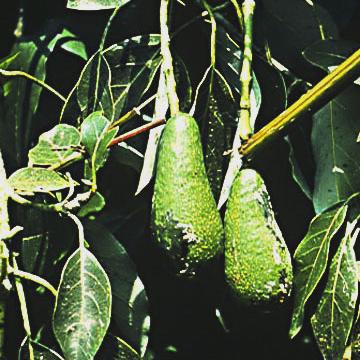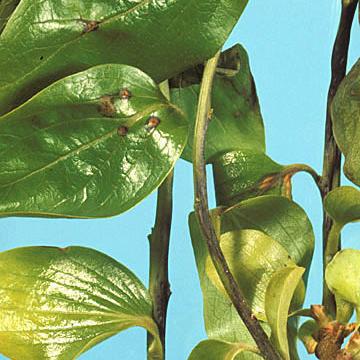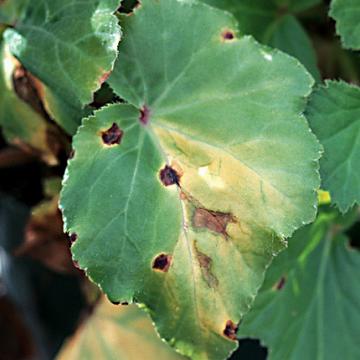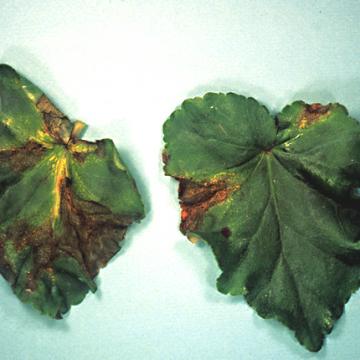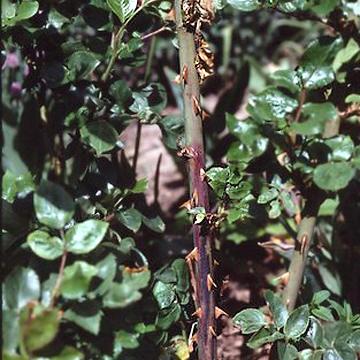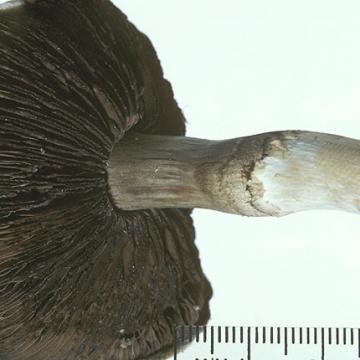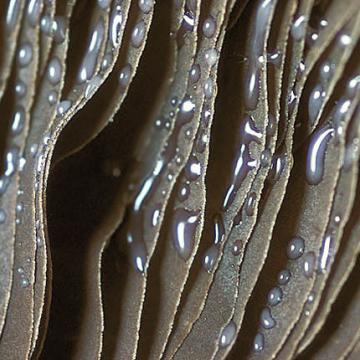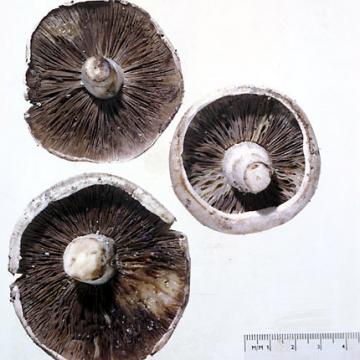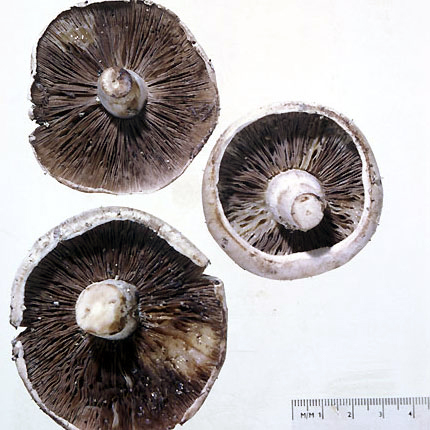DISEASE: Bacterial blast and fruit spot
HOST: Avocado
White bacterial ooze on surface of fruit. Pseudomonas strains that cause canker likely differ from those that infect fruit and leaves.
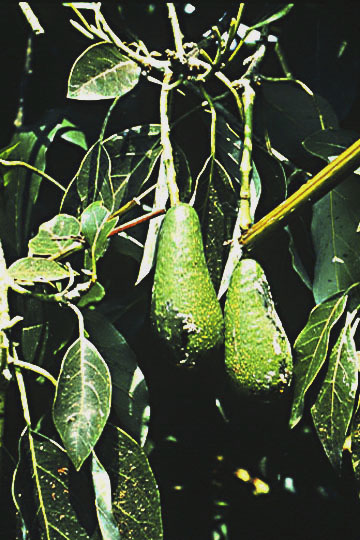
Bacterial blast and fruit spot | Avocado
DISEASE: Bacterial blast and fruit spot
HOST: Avocado (Persea americana)
PATHOGEN: Pseudomonas syringae
SOURCE: L. Fucikovsky
DISEASE: Bacterial blight
HOST: Persimmon
Diseased shoots with spots on leaves and necroses on stems.
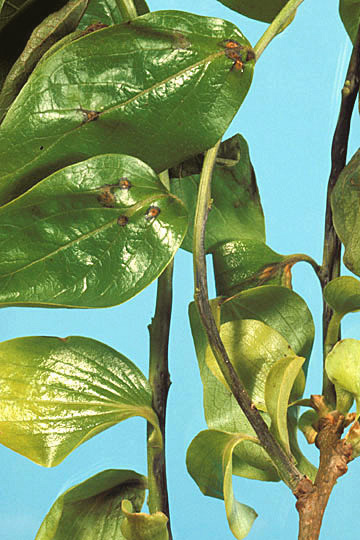
Bacterial blight | Persimmon
DISEASE: Bacterial blight
HOST: Persimmon (Diospyros sp.)
PATHOGEN: Pseudomonas syringae
SOURCE: J. Young
DISEASE: Bacterial leaf spot (Blight)
HOST: Begonia
Initial symptoms appear as small, blisterlike lesions. As lesions age, they enlarge, producing broad patches of necrotic leaf tissue.
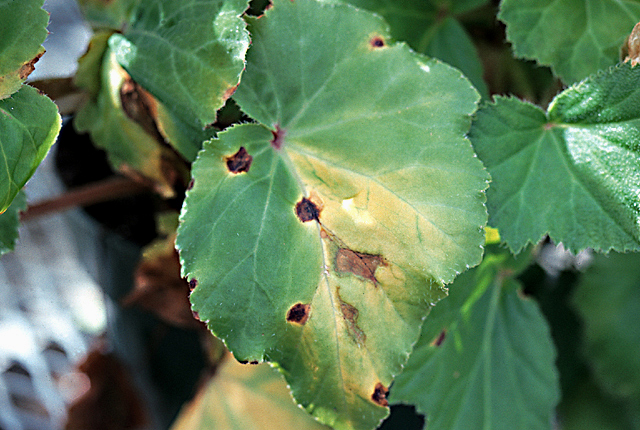
Bacterial leaf spot (Blight) | Begonia
DISEASE: Bacterial leaf spot (Blight)
HOST: Begonia (Begonia sp.)
PATHOGEN: Xanthomonas axonopodis pv. begoniae
PATHOGEN SYNONYM: Xanthomonas campestris pv. begoniae
SOURCE: APS
DISEASE: Bacterial leaf spot (Blight)
HOST: Begonia
Advanced stage of disease with dark, large necrotic areas on leaves and interveinal chlorosis.
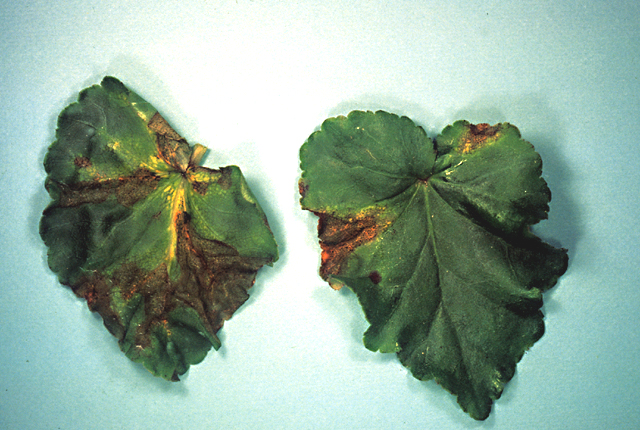
Bacterial leaf spot (Blight) | Begonia
DISEASE: Bacterial leaf spot (Blight)
HOST: Begonia (Begonia sp.)
PATHOGEN: Xanthomonas axonopodis pv. begoniae
PATHOGEN SYNONYM: Xanthomonas campestris pv. begoniae
SOURCE: APS
DISEASE: Cane blight
HOST: Rose
Rose with blighted necrotic cane.
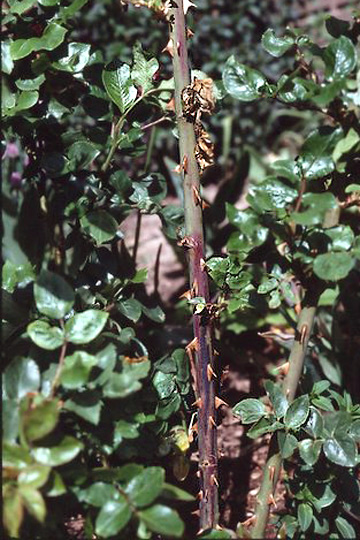
Cane blight | Rose
DISEASE: Cane blight
HOST: Rose (Rosa sp.)
PATHOGEN: Pseudomonas syringae
SOURCE: S. Mohan
DISEASE: Drippy gill
HOST: Mushroom
Drippy gill is characterized by small dark spots on gills with drops of bacterial ooze at the centers. Severe infection results in slimy areas and collapse of gills.
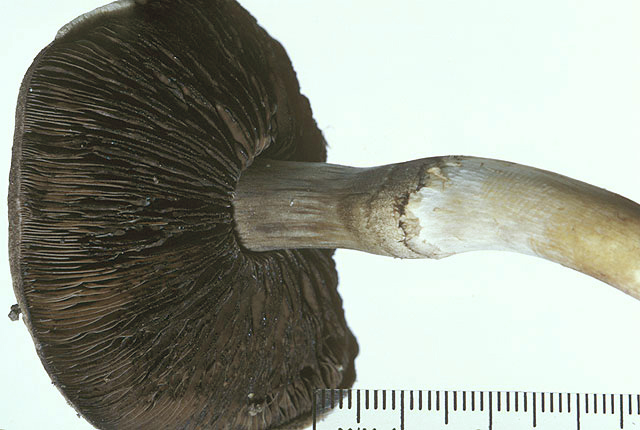
Drippy gill | Mushroom
DISEASE: Drippy gill
HOST: Mushroom (Agaricus campestris)
PATHOGEN: Pseudomonas agarici
SOURCE: J. Young
DISEASE: Drippy gill
HOST: Mushroom
Close-up of infected gills with bacterial ooze.
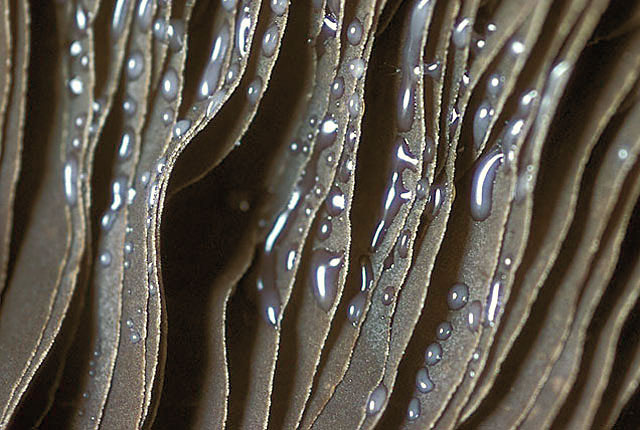
Drippy gill | Mushroom
DISEASE: Drippy gill
HOST: Mushroom (Agaricus campestris)
PATHOGEN: Pseudomonas agarici
SOURCE: J. Young


